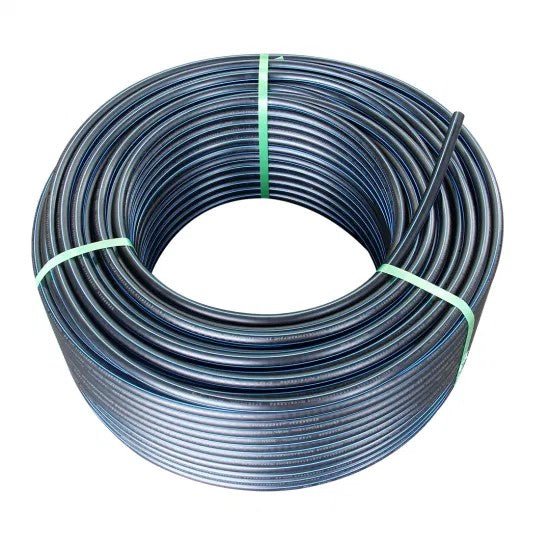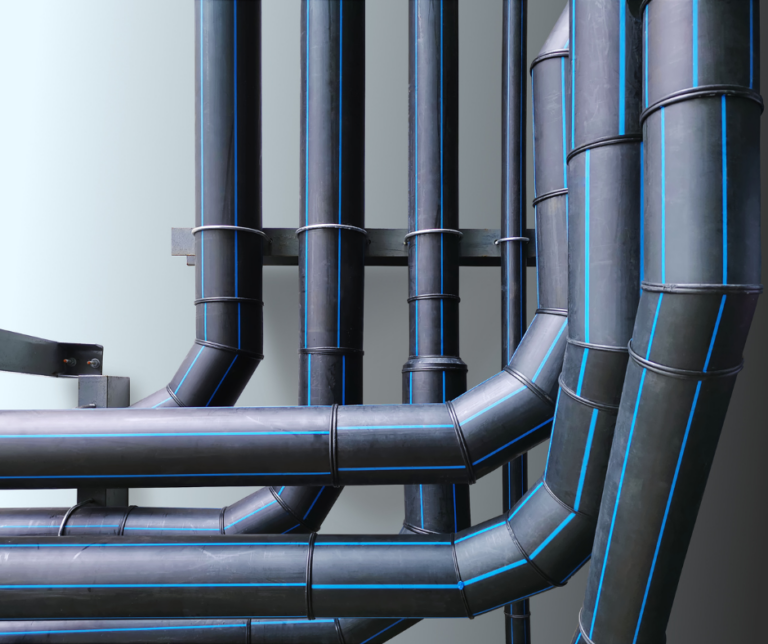Advantages of Choosing custom hdpe pipe manufacturing Midland TX for Tailored Solutions
The Necessary Actions for Successful Installment of HDPE Pipe in Your Next Project
Effective setup of HDPE pipe calls for careful preparation and execution. Trick actions consist of reviewing task needs, preparing the site, and selecting appropriate signing up with strategies. Each phase plays a critical duty in making certain the stability and efficiency of the pipe. Recognizing these necessary actions can substantially influence the overall success of the project - American Plastics HDPE Pipe for Oilfield. Nonetheless, the nuances of each step may hold the key to conquering usual obstacles encountered throughout installment
Comprehending the Perks of HDPE Pipeline
High-density polyethylene (HDPE) pipeline offers many benefits that make it a recommended choice for various applications. Its high resistance to deterioration and chemicals warranties longevity in demanding atmospheres, greatly expanding the lifespan of installations. Furthermore, HDPE's versatility permits easier installment, specifically in challenging surfaces, as it can flex without breaking. The light-weight nature of HDPE pipe streamlines transport and handling, minimizing labor costs throughout installation.
HDPE pipe is recognized for its low friction coefficient, which enhances fluid flow and reduces power consumption. Its smooth building and construction minimizes the danger of leaks, adding to better source administration and ecological protection. In addition, HDPE is recyclable, straightening with lasting techniques and reducing environmental impact. Overall, the mix of strength, versatility, and eco-friendliness makes HDPE pipe an exceptional selection for a large range of projects, from water circulation to industrial applications.
Preparation Your HDPE Pipe Installment
When planning an installation of HDPE pipeline, careful consideration of a number of essential aspects is vital to secure a successful job. Task supervisors must examine the specific demands of the pipeline, including the intended use, flow prices, and environmental conditions. Understanding these specifications will direct the choice of suitable pipeline dimensions and product quality.
Next, timelines need to be established, considering purchase routines and any possible delays. Coordination with regional authorities for licenses and regulatory conformity is also crucial. Furthermore, a comprehensive spending plan ought to be prepared, including all costs connected with materials, labor, and machinery.
Finally, it is necessary to engage a qualified group experienced in HDPE pipeline installment. Their experience will certainly help mitigate dangers, assurance adherence to sector requirements, and eventually contribute to the task's success. Comprehensive preparation prepares for a smooth installation procedure and lasting efficiency of the HDPE piping system.
Preparing the Site for Installation
Correct site prep work is crucial for the successful installment of HDPE pipeline. Prior to installation begins, the website needs to be completely analyzed to assure it satisfies all necessary requirements. This includes evaluating the ground for existing frameworks, utilities, and prospective threats that can hamper the setup procedure.

Appropriate elevation and alignment ought to be developed to maintain a constant slope for water drainage purposes. Proper drainage around the setup website is likewise essential to avoid water buildup, which can cause complications down the line.
Methods for Signing Up With HDPE Pipelines
Achieving a trustworthy link between HDPE pipelines is essential for making sure the integrity and long life of the installation. Different strategies exist for signing up with these pipelines, each suited for different job requirements. Combination welding is one of one of the most usual approaches, utilizing warmth to bond the pipe ends together, creating a seamless and sturdy connection. This strategy can be further classified into socket fusion and butt combination, relying on the pipe configurations.
Mechanical installations are an additional choice, using clamps and threaded ports to join sections of HDPE pipe. While usually faster to mount, they may call for added maintenance over time. Electrofusion is a specialized method that involves making use of electric existing to heat and fuse the pipes through specifically developed installations, ensuring a strong bond. Choosing the appropriate joining strategy is essential, as it directly impacts the overall performance and dependability of the HDPE piping system in the desired application.
Examining and Evaluation of Installed Water Lines
The screening and inspection of set up HDPE pipes are important to guaranteeing their capability and long life. This process includes visual examination methods, pressure screening methods, and leak discovery treatments to recognize potential problems. By employing these techniques, specialists can confirm the stability of the installment prior to it is taken into usage.
Aesthetic Evaluation Techniques
Using reliable visual assessment strategies is crucial for ensuring the stability of set up HDPE pipelines. Examiners ought to systematically analyze all noticeable sections of the pipe to recognize any type of indicators of damages, imbalance, or inappropriate installation. Trick signs to examine consist of joint integrity, surface irregularities, and links. Inspectors may make use of tools such as amplifying glasses or cams to enhance exposure and detail. It is important to inspect for signs of environmental stress, such as buckling or extreme flexing, which might endanger performance. Consistent documents of searchings for enables tracking adjustments over time and assists guide necessary repair services. By adhering to well-known visual examination protocols, job teams can significantly lower the threat of future failures and guarantee long-lasting dependability of the piping system.
Pressure Examining Techniques
Aesthetic assessment offers as a preliminary action, yet it is not sufficient on its own to ensure the efficiency of mounted HDPE pipelines. Pressure screening techniques are essential for making certain the honesty of these systems. Commonly, hot tapping pipeline hydrostatic testing is employed, where the pipelines are loaded with water and subjected to stress levels over the intended operating stress. This method helps identify weaknesses or prospective leakages. Pneumatically-driven testing can additionally be utilized, although it lugs greater risks as a result of the compressibility of air. Regardless of the method picked, adhering to market criteria and safety and security protocols is crucial. After conducting pressure tests, extensive paperwork is essential to verify the outcomes and verify that the installation meets all functional demands before proceeding to the next phase of the task.

Drip Discovery Procedures
Exactly how can one guarantee that mounted HDPE pipes are devoid of leakages? Effective leak discovery treatments are vital to protect the honesty of the system. At first, visual inspections must be done, looking for signs of water build-up or dirt disintegration around pipeline joints. Following this, stress testing can confirm the system's toughness. An usual method is the hydrostatic test, where water is introduced under pressure, keeping track of for decreases that show prospective leaks. In addition, advanced innovations, such as acoustic sensing units or infrared thermography, can detect leakages that may not be noticeable. Routine tracking and maintenance further add to the durability of HDPE pipelines, ensuring they stay leak-free throughout their operational life-span. Proper documents of these procedures is important for compliance and future recommendation.
Upkeep Tips for Long-Term Efficiency
To guarantee the longevity of HDPE pipes, developing a normal inspection timetable is important. This proactive approach enables the early discovery of possible problems, decreasing costly fixings. In addition, carrying out appropriate cleansing methods will certainly help preserve peak performance and avoid accumulation that can affect performance.
Normal Inspection Set Up
HDPE pipelines are recognized for their here are the findings toughness and resistance to rust, developing a routine inspection routine is crucial for ensuring their long-term performance. Regular assessments help identify possible concerns such as leakages, joint honesty, and environmental impacts that might affect the pipe's performance. It is recommended that evaluations occur at the very least biannually, or more frequently in environments with extreme conditions. American Plastics HDPE Pipe for Oilfield. During these assessments, visual checks need to be carried out to discover signs of wear or damage. Additionally, utilizing modern technology such as ultrasonic screening can supply more insights right into the pipeline's problem. By executing a structured evaluation timetable, job managers can proactively address troubles, consequently extending the life-span of HDPE pipes and keeping system effectiveness
Proper Cleansing Techniques
Correct cleansing techniques play an important function in maintaining the long-lasting performance of HDPE pipes. Routine cleaning prevents the build-up of debris, debris, and biofilm, which can lead to obstructions and reduced circulation efficiency. Operators should use techniques such as high-pressure water jetting or foam cleansing to efficiently remove pollutants without damaging the pipe have a peek at these guys surface. It is vital to prevent utilizing severe chemicals that might weaken HDPE material. In addition, set up maintenance checks must include aesthetic inspections for any kind of signs of wear or damages. Properly educated workers must perform these cleansing procedures, making sure compliance with security and environmental policies. By implementing these techniques, the life expectancy of HDPE pipelines can be considerably extended, making certain ideal performance throughout their functional life.
Often Asked Inquiries
What Are the Ecological Impacts of HDPE Pipeline Manufacturing?
The ecological effects of HDPE pipeline production consist of greenhouse gas exhausts, energy intake during manufacturing, potential plastic pollution, and obstacles in recycling. However, HDPE's durability and resistance to rust can alleviate some ecological worries.
Just How Does HDPE Pipe Compare to Various Other Products?

What Devices Are Required for HDPE Pipe Installation?
Essential tools for HDPE pipe setup include a combination equipment, pipe cutters, shovels, measuring tape, and safety and security equipment. Proper tools guarantees effective, safe handling and installment, adding to the project's overall success and integrity.
Are There Any Certain Regulations for HDPE Pipeline Installment?
Specific regulations for HDPE pipeline installment vary by region, usually regulated by regional, state, or government codes. Compliance with these laws assurances safety and security, environmental security, and performance, making adherence important for successful job outcomes.
Can HDPE Pipeline Be Recycled After Use?
Yes, HDPE pipes can be recycled after usage. Their polycarbonate nature permits reprocessing, making them suitable for recycling right into brand-new products. This sustainability facet contributes to environmental conservation and promotes round economic situation practices in building and construction.